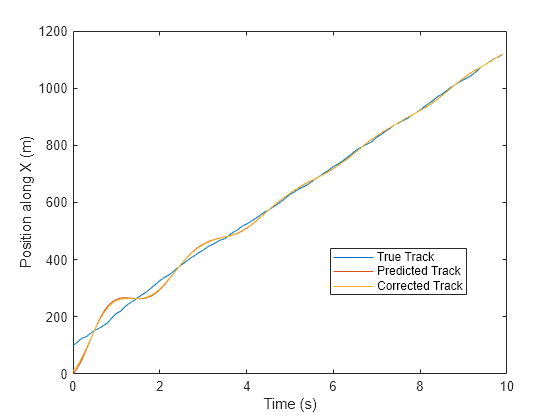phased.AlphaBetaFilter
Alpha-beta filter for object tracking
Description
The phased.AlphaBetaFilter object creates an alpha-beta filter designed for
object tracking. Use this tracker for platforms that follow a linear motion model and have a
linear measurement model. Linear motion is defined by constant velocity or constant
acceleration. Use the filter to predict the future location of an object, to reduce noise for
a detected location, or to help associate multiple objects with their tracks.
Creation
Description
abf = phased.AlphaBetaFilterMotionModel property to
'2D Constant Velocity'. In this case, the filter state takes the
form [x; vx; y; vy].
abf = phased.AlphaBetaFilter(Name=Value)Name=Value
pair arguments. Any unspecified properties take default values.
Properties
Object Functions
predict | Predict the state and state estimation error covariance |
correct | Correct the state and state estimation error covariance |
distance | Distances between measurements and predicted measurements |
likelihood | Likelihood of measurement |
clone | Create identical object |
Examples
References
[1] Blackman, Multiple-Target Tracking with Radar Applications, Artech House, 1986.
[2] Bar-Shalom et al., Estimation with Applications to Tracking and Navigation, Theory, Algorithms, and Software. John Wiley & Sons, 2001.
Extended Capabilities
Version History
Introduced in R2018b
See Also
predict | correct | distance | likelihood | clone


